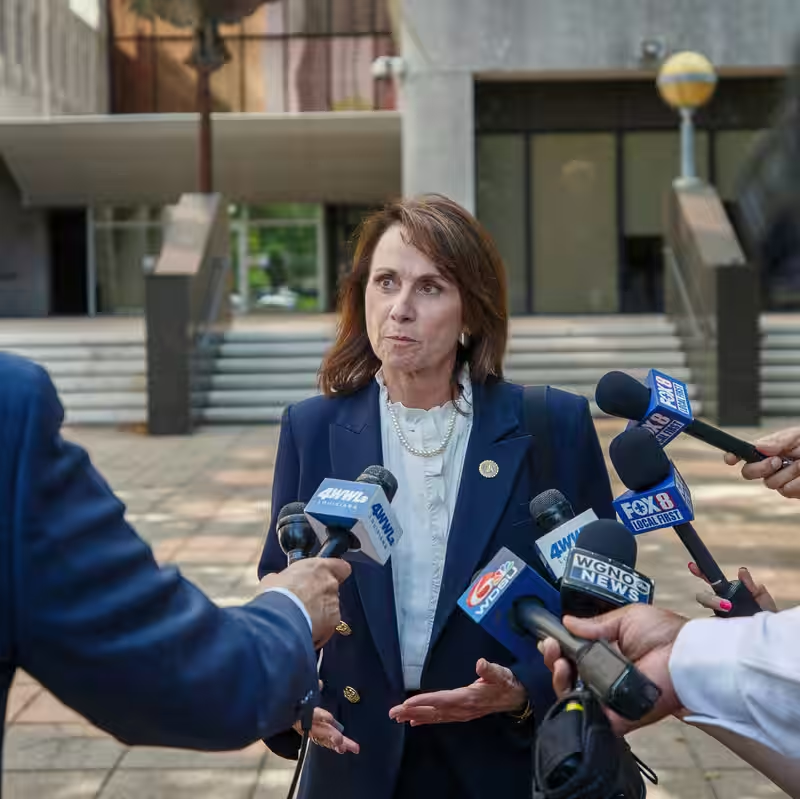Table of Contents
- Louisiana’s Surprising Reversal Explained
- The Callais Case: What’s at Stake?
- Political Implications of the Flip
- Legal Experts React
- Sources
Louisiana’s Surprising Reversal Explained
In a move that stunned legal observers and voting rights advocates alike, Louisiana has dramatically switched sides in the Supreme Court case Louisiana v. Callais—a pivotal battle over the future of the Voting Rights Act. Once defending its congressional map as legally sound, the state now appears to be aligning with plaintiffs who argue the map dilutes Black voting power.
Earlier this year, Louisiana officials insisted their redistricting plan was driven purely by partisan—not racial—considerations. But in a new brief filed ahead of oral arguments, the state essentially flipped its position, acknowledging flaws in its original map and signaling openness to court-ordered remedies .
This shift comes amid mounting pressure from civil rights groups and a changing political calculus in a state where demographic shifts are reshaping electoral dynamics.
The Callais Case: What’s at Stake?
The case, Louisiana v. Callais, centers on whether the state’s 2024 congressional map violates Section 2 of the Voting Rights Act by failing to create a second majority-Black district, despite Black residents making up nearly one-third of Louisiana’s population.
Originally, Louisiana argued that its single majority-Black district was justified by political data and geographic constraints. But after a federal court ordered a second district in 2023—and the Supreme Court temporarily allowed it for the 2024 elections—the state’s stance began to evolve .
Now, with a Republican-controlled legislature and a Democratic governor at odds, Louisiana’s legal team appears to be walking a tightrope: avoiding further court intervention while managing internal party tensions.
Louisiana Congressional Districts: Before and After
| Year | Majority-Black Districts | Total Congressional Seats | Black Population Share |
|---|---|---|---|
| 2022 | 1 | 6 | 32% |
| 2024 (Court-Ordered) | 2 | 6 | 32% |
| 2025 (Proposed by State) | 1 (reinstated) | 6 | 32% |
Political Implications of the Flip
Louisiana’s reversal isn’t just a legal maneuver—it’s a political signal. By softening its defense of the original map, the state may be attempting to avoid a broader Supreme Court ruling that could either gut or reinforce the Voting Rights Act nationwide .
Some analysts suggest the shift reflects internal GOP concerns: a sweeping conservative ruling might backfire in states with growing minority populations, potentially alienating swing voters ahead of the 2026 midterms.
“Louisiana isn’t just changing its legal argument—it’s changing its strategy,” said Dr. Maya Lin, a constitutional law professor at Tulane University. “They’re trying to thread the needle between loyalty to party ideology and the reality of federal court precedent.”
Legal Experts React
Civil rights organizations have welcomed Louisiana’s new posture—but remain cautious. “This isn’t generosity; it’s damage control,” said Sherrilyn Ifill, former president of the NAACP Legal Defense Fund. “They know the original map wouldn’t survive scrutiny under current law.”
Meanwhile, conservative legal groups accuse the state of capitulation. “Louisiana is abandoning its sovereignty to activist judges,” argued a statement from the Heritage Foundation.
As the Supreme Court deliberates, all eyes are on whether this unexpected pivot will influence the justices’ final decision—one that could redefine voting rights for decades.
[INTERNAL_LINK:voting-rights-act] | [INTERNAL_LINK:louisiana-redistricting] | [INTERNAL_LINK:supreme-court]




